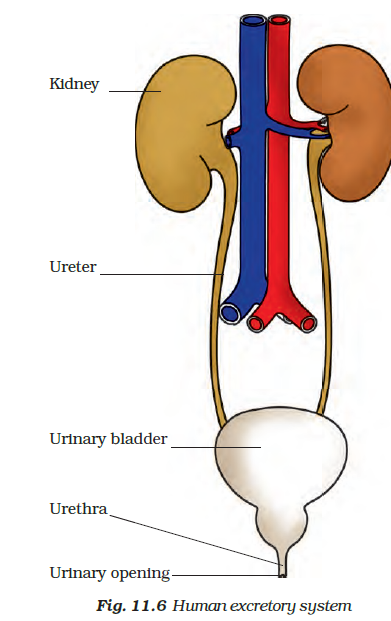Need help? We're here to assist you!
Thank You for Enquiry, we will contact you soon!
Close
The Class 7 is an important year in a student’s life and Science is one of the subjects that require dedication, hard work, and practice. It’s a subject where you can score well if you are well-versed with the concepts, remember the important formulas and solving methods, and have done an ample amount of practice. Worry not! Home Revise is here to make your Class 7 journey even easier. It’s essential for students to have the right study material and notes to prepare for their board examinations, and through Home Revise, you can cover all the fundamental topics in the subject and the complete NCERT Class 7 Science Book syllabus.

Exercise Questions
1. Match structures given in Column I with functions given in Column II.
| Column- I | Column-II |
| (i) Stomata | (a) Absorption of water |
| (ii) Xylem | (b) Transpiration |
| (iii) Root hairs | (c) Transport of food |
| (iv) Phloem | (d) Transport of water |
| (e) Synthesis of carbohydrates |
Solution:
| Column- I | Column-II |
| (i) Stomata | (b) Transpiration |
| (ii) Xylem | (d) Transport of water |
| (iii) Root hairs | (a) Absorption of water |
| (iv) Phloem | (c) Transport of food |
2. Fill in the blanks.
(i) The blood from the heart is transported to all parts of the body by the _____________.
(ii) Haemoglobin is present in _____________ cells.
(iii) Arteries and veins are joined by a network of _____________.
(iv) The rhythmic expansion and contraction of the heart is called the _____________.
(v) The main excretory product in human beings is _____________.
(vi) Sweat contains water and _____________.
(vii) Kidneys eliminate the waste materials in the liquid form called _____________.
(viii) Water reaches great heights in the trees because of suction pull caused by _____________.
Solution:
(i) The blood from the heart is transported to all parts of the body by the arteries .
(ii) Haemoglobin is present in red blood cells.
(iii) Arteries and veins are joined by a network of capillaries .
(iv) The rhythmic expansion and contraction of the heart is called the heartbeat .
(v) The main excretory product in human beings is urea .
(vi) Sweat contains water and salts .
(vii) Kidneys eliminate the waste materials in the liquid form called urine .
(viii) Water reaches great heights in the trees because of suction pull caused by transpiration .
3. Choose the correct option:
(a) In plants, water is transported through
(i) xylem
(ii) phloem
(iii) stomata
(iv) root hair
(b) Water absorption through roots can be increased by keeping the plants
(i) in the shade
(ii) in dim light
(iii) under the fan
(iv) covered with a polythene bag
Solution:
a) i) xylem
b) iii) under the fan
4. Why is the transport of materials necessary in a plant or in an animal? Explain.
Solution:
Transport of materials is necessary for both plants and animals as every cell needs a regular supply of nutrients and oxygen to release energy through respiration.
The food that we eat is broken down into smaller components to be absorbed by cells. The oxygen we inhale also has to be transported to all the cells of the body. Our body also requires the constant removal of waste materials such as carbon dioxide.
For the transport of all these materials (nutrients, oxygen and waste products), our body has a specialised transport system.
Similarly, in plants, the transport of water and food is accomplished with the help of vascular tissues (xylem and the phloem).
5. What will happen if there are no platelets in the blood?
Solution:
If there are no platelets, then blood will not clot as platelets release blood clotting factor at the site of injury and stop further bleeding.
6. What are stomata? Give two functions of stomata.
Solution:
Tiny pores present on the leaf surface are known as stomata.
Functions of stomata
7. Does transpiration serve any useful function in plants? Explain.
Solution:
Transpiration serves the following functions in plants
8. What are the components of blood?
Solution:
The components of blood are red blood cells, white blood cells, platelets and plasma.
9. Why is blood needed by all the parts of a body?
Solution:
Blood is a significant part of the transport system in our body, and we need blood for the following reasons:
10. What makes the blood look red?
Solution:
The presence of a red pigment called haemoglobin in red blood cells (RBC)makes the blood appear red.
11. Describe the function of the heart.
Solution:
The heart is an organ which beats continuously to act as a pump for the transport of blood, which carries other substances with it. The heart has four chambers. The two upper chambers are called the atria (singular: atrium), and the two lower chambers are called the ventricles. The partition between the chambers helps to avoid mixing up blood-rich in oxygen with the blood-rich in carbon dioxide. Blood flows from the heart to the lungs and back to the heart, from where it is pumped to the rest of the body.

12. Why is it necessary to excrete waste products?
Solution:
When the cells in the body perform their functions, certain waste products are released. These are toxic and hence need to be removed from the body.
13. Draw a diagram of the human excretory system and label the various parts.
Solution:
